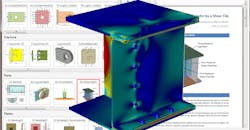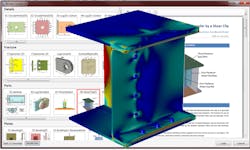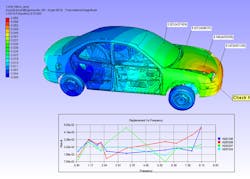Here Comes the Simulation Revolution! Part 1
There’s a relatively new term that’s quickly gaining momentum throughout design and manufacturing these days; and with good reason. The Democratization of Simulation (DoS) isn’t a futuristic concept nor is it something that’s in the works. Rather, the initiative is a very real new product development approach with a history of delivering some impressive results to early implementers.
As the rest of the product development world sits up and takes notice there are a number of questions raised:
- How exactly can simulation be democratized
- Why is it necessary
- What are the benefits and challenges
- How is this best implemented?
Throughout a series of short articles we’ll detail how it works, examine some of today’s enabling tools, and take a look at organizations fully leveraging their simulation investments by successfully democratizing simulation today. If you can’t wait and are interested in taking a deeper dive, or just wish to learn a little more, click here. This on-line vendor-neutral resource contains case studies, moderated discussions, and educational material on the topic.
Let’s begin by examining the concept of Democratizing Simulation along with some of its benefits and challenges.
Portfolio of simulation apps displayed in an e-handbook browser. (Courtesy of ESRD, Inc.)
So what is the Democratization of Simulation?
Suppose that in order to drive a car you were required to be an expert in the dynamics and physics needed to propel a collection of parts down the street. Needless to say, the overwhelming majority of us would still be on horseback. While this may appear to be an exaggerated example, one could argue that the manufacturing world has operated in this way for more than fifty years. Many design, manufacturing or product development organizations have a resident expert (or handful of experts) responsible for performing CAE analysis on CAD models. These experts have accumulated a wealth of knowledge/experience and are proficient with one or more related applications. The contribution of these people to the companies they serve is unquestioned.
However, in an ironic twist, the fact that these experts are often an organization’s sole resource for preforming simulations also makes them a liability. This same exclusivity that makes these simulation key-keepers so valuable also creates bottlenecks and delays that impact the turn-around and throughput needed to fuel today’s accelerated product development processes. What’s more, the time demand on these analysts stifles product innovation by restricting the number of design alternatives that can be effectively evaluated.
Share that Expertise
What if the inherent knowledge and experience of your senior CAE resources could be captured and extended to others throughout the organization? What if those who do not possess expertise in numerical simulation could tap into such knowledge to safely perform even complex simulations? That in a nutshell is the idea behind a growing movement throughout design and manufacturing today: the Democratization of Simulation.
Through DoS companies are able to fully maximize the return on investment of CAE tools and resources. With today’s sharply growing demand for simulation, empowering non-experts to safely and accurately perform CAE analysis exponentially increases the usage and capabilities of simulation within an organization. More users equates to faster analysis turnaround and the capacity to evaluate a greater number of design alternatives. This makes simulation-driven rapid innovation feasible. Simply put, simulation should be safely and robustly accessible beyond a select few experts to include others in the organization such as designers and junior engineers for example.
The gaining momentum of DoS was evident during the Conference of Advancing Analysis & Simulation in Engineering (CAASE 18) event, held this past summer in Cleveland. There were no less than fourteen democratization-related presentations, papers, and case studies presented by nearly a dozen companies to more than 500 attendees from 264 global companies. “We have witnessed a staggering increase of interest related to the topic of simulation democratization from the end-user community,” noted NAFEMS VP, Americas & Special Projects Americas, Matt Ladzinski. “For example, at the 2015 NAFEMS World Congress democratization represented a single session, which grew into a multi-month webinar series in 2016. At CAASE 18 democratization occupied a full three-day track.”
Democratization of 3D CAE Models + Results + Product Performance Information to improve data insights and fasten the design decisions.
The Bottom Line is the Bottom Line
The benefits of extended simulation throughout product development are both numerous and game-changing:
- Accelerated development cycles
- Superior brand image
- Improved quality with fewer warranty claims
- Increased market share
- A measurable and sustained impact on profitability
- Preservation and maintenance of corporate know-how
Democratization is really about business drivers for improved competitiveness. When fully leveraged, engineering simulation allows designs to be validated more quickly than possible today. Similarly, allowing more people to explore and evaluate more design ideas significantly impacts product innovation, quality and manufacturability while reducing risk factors. Still, to achieve these and other results a number of obstacles must be overcome.
Challenges
Like any new approaches – especially one that impacts a sophisticated process such as product development – there will be obstacles and resistance. Here are a few of the more common challenges on the path to Democratizing Simulation.
Management Buy-in
Lacking a deep understanding of simulation tools and process themselves, business executives, product line managers, and engineering chiefs without CAE experience tend to defer to their simulation experts. With profitability and jobs often on the line, this is understandable. However, this business as usual approach often has an adverse effect of stifling innovation.
Still some industry veterans may believe that this is simply a reboot of earlier attempts to achieve similar results with CAE technologies. In the past legacy FEA codes were embedded into CAD software, scripts automated, and excel-driven templates employed. These and other attempts failed owing to limitations in the early-generation technology and software requiring a high level of expertise to ascertain the validity of the results.
Adoption of Simulation Governance
The vision of expanding the use of simulation by non-experts cannot be safely realized without the practice of Simulation Governance. Simulation governance is a managerial function concerned with the assurance of reliability of information generated by numerical simulation. This involves
- The selection and adoption of the best available simulation technology
- Proper formulation of idealizations (mathematical models)
- Management of experimental data
- Data and solution verification procedures
- Revision of mathematical models in the light of new information collected from physical experiments and field observations.
A plan for Simulation Governance has to fit the mission of each organization or department within an organization. If that mission is Democratization of Simulation by creating and deploying Simulation Apps to apply established rules of design and certification, then emphasis is on data and solution verification.
“The goal is to ensure that the data are used properly and the numerical errors in the quantities of interest are acceptably small,” said Ricardo Actis, president & CEO of Engineering Software Research & Development, Inc. (ESRD). “Simulation apps must have built-in safeguards to prevent use outside of the range of parameters for which they were designed. They must incorporate automatic procedures for solution verification. In addition, simulation apps must be deployed with a detailed description of all assumptions incorporated in the mathematical model and a clear definition of the range and scope of application. To do otherwise would not be Democratization of Simulation but a redistribution of risk.”
What’s Next?
In the next installment we’ll take a look at three key challenges associated with quantifying a return on investment related to Democratizing Simulation and take a look at some success stories.
Robert Farrell, Jr. is president of Farrell MarCom, LLC.



